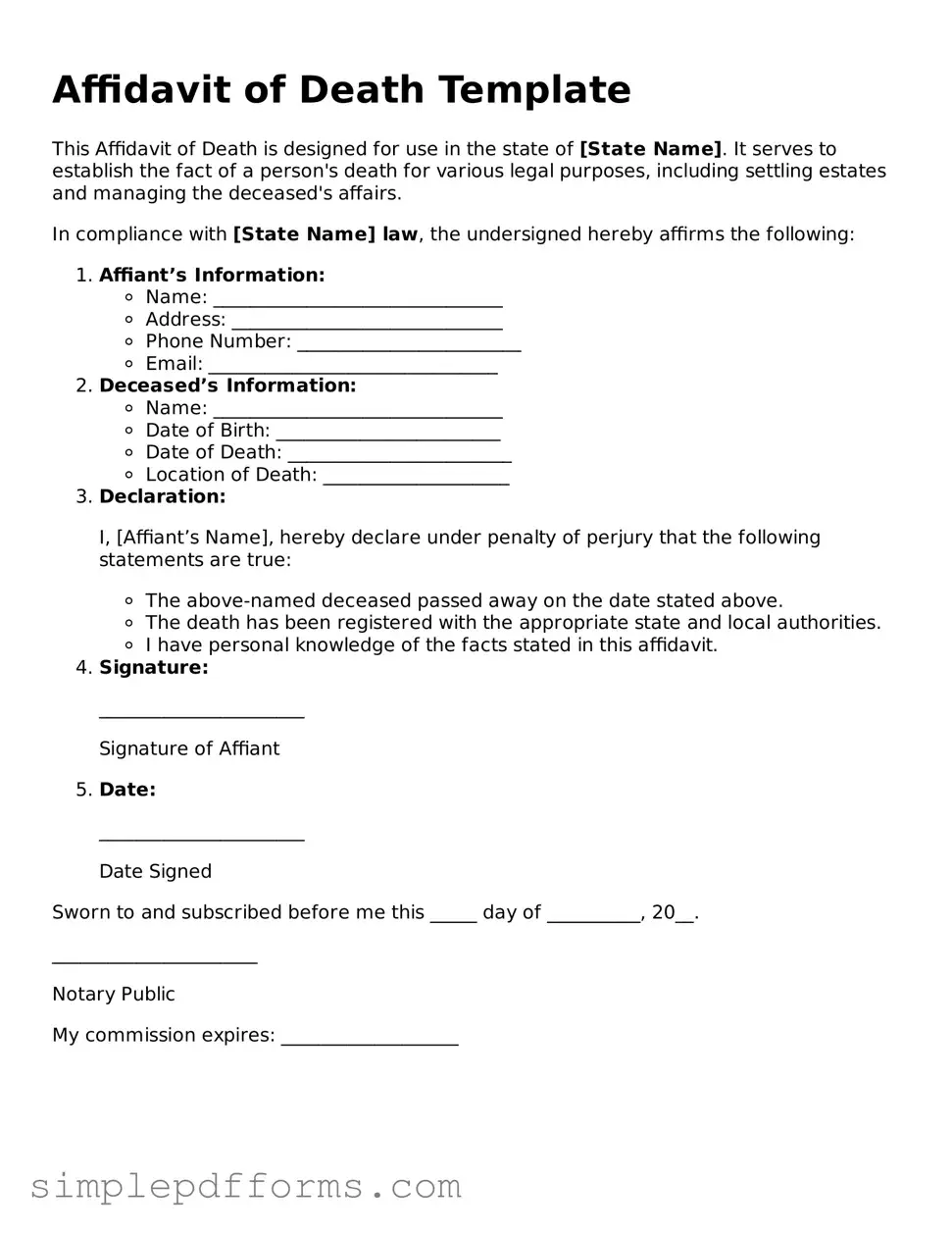Affidavit of Death Template
This Affidavit of Death is designed for use in the state of [State Name]. It serves to establish the fact of a person's death for various legal purposes, including settling estates and managing the deceased's affairs.
In compliance with [State Name] law, the undersigned hereby affirms the following:
- Affiant’s Information:
- Name: _______________________________
- Address: _____________________________
- Phone Number: ________________________
- Email: _______________________________
- Deceased’s Information:
- Name: _______________________________
- Date of Birth: ________________________
- Date of Death: ________________________
- Location of Death: ____________________
- Declaration:
I, [Affiant’s Name], hereby declare under penalty of perjury that the following statements are true:
- The above-named deceased passed away on the date stated above.
- The death has been registered with the appropriate state and local authorities.
- I have personal knowledge of the facts stated in this affidavit.
- Signature:
______________________
Signature of Affiant
- Date:
______________________
Date Signed
Sworn to and subscribed before me this _____ day of __________, 20__.
______________________
Notary Public
My commission expires: ___________________
